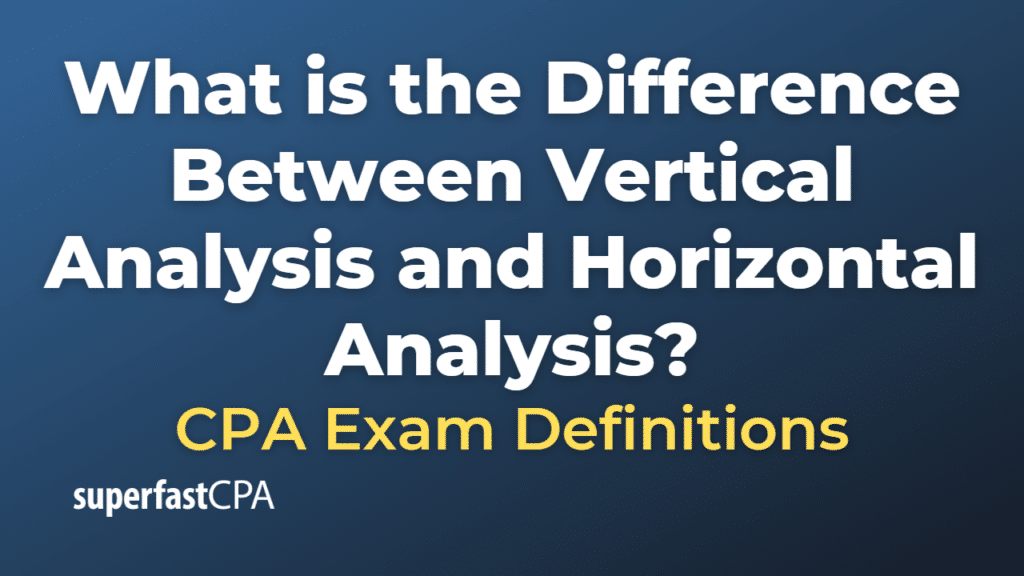Difference Between Vertical Analysis and Horizontal Analysis
Vertical analysis and horizontal analysis are two main types of financial statement analysis that provide different perspectives about a company’s financial performance:
- Vertical Analysis:
Vertical analysis, also known as common size analysis, expresses each item on a financial statement as a percentage of a base amount for the same period. For example, on an income statement, every item might be expressed as a percentage of sales. On a balance sheet, each item might be shown as a percentage of total assets. This method of analysis allows for a useful comparison of line items within a single period and can provide insight into the cost structure and profitability of a company. It can also aid in comparing companies of different sizes in the same industry. - Horizontal Analysis:
Horizontal analysis, on the other hand, compares financial data over time by calculating the percentage change for each line item year over year. This is also referred to as trend analysis. For example, the sales figure from the current year might be compared with the sales figure from the previous year to see how much sales have grown or declined. Horizontal analysis is useful for identifying trends in a company’s performance over time and for comparing its performance with that of other companies over the same time period.
In summary, while vertical analysis involves comparing different items within the same period (often within the same financial statement), horizontal analysis involves comparing the same item over multiple time periods. Both can provide useful insights, but they serve different purposes and may be more effective when used in combination.
Example of the Difference Between Vertical Analysis and Horizontal Analysis
Let’s use examples of both vertical and horizontal analyses:
Vertical Analysis:
Assume we have the following simple income statement for Company ABC for the year 2023:
| Income Statement Items | Amount ($) |
|---|---|
| Revenue | 500,000 |
| Cost of Goods Sold (COGS) | 300,000 |
| Gross Profit | 200,000 |
| Operating Expenses | 50,000 |
| Net Income | 150,000 |
In a vertical analysis, each item would be represented as a percentage of revenue:
| Income Statement Items | Amount ($) | Percentage of Revenue (%) |
|---|---|---|
| Revenue | 500,000 | 100% |
| Cost of Goods Sold (COGS) | 300,000 | 60% |
| Gross Profit | 200,000 | 40% |
| Operating Expenses | 50,000 | 10% |
| Net Income | 150,000 | 30% |
This tells us, for example, that COGS represents 60% of total revenue and that net income is 30% of total revenue.
Horizontal Analysis:
Now let’s assume we have revenue data for Company ABC for the years 2022 and 2023:
| Year | Revenue ($) |
|---|---|
| 2022 | 400,000 |
| 2023 | 500,000 |
In a horizontal analysis, we calculate the growth from 2022 to 2023 as follows:
(500,000 – 400,000) / 400,000 * 100 = 25%
So, Company ABC’s revenue grew by 25% from 2022 to 2023.
These are simplified examples, but they should give you an idea of how vertical and horizontal analyses work. Both types of analyses provide valuable insights about a company’s financial health, but from different perspectives. Vertical analysis looks at each item in relation to a base item within the same period, while horizontal analysis looks at the changes in individual items over time.













